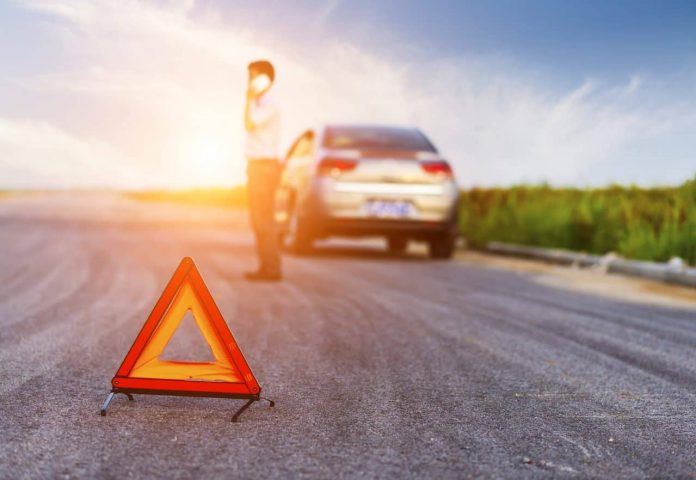This article talks about NHforEV project, that is being pursued under the initiative of Ease of Doing Business Program by ASSAR (Advance Services for Social and Administrative Reforms), a private entity in supported by Ministry of Science and Technology, NITI Aayog and key ministries.
The project is aimed at converting Jaipur-Delhi-Agra highway into an e-highway that provides charging facilities, automatic roadside assistance, 24*7 connectivity and anti-theft protection to all the electric vehicles running on the corridor. NHforEV aims to develop a framework that could be replicated pan-India for transforming the rest of the 12 identified corridors by Ministry of Power into electric highways. In an exclusive conversation with EVreporter, Director for NHforEV, Abhijeet Sinha stated that the main challenges in adoption of electric vehicles are high acquisition cost of electric vehicles and lack of supporting infrastructure that discourages potential buyers from opting for electric vehicles. While it is unfair to expect OEMs to supply long-range electric cars in the same range as ICE vehicles, work is required to evolve business models to accommodate for the change in dynamics that e-mobility brings.
“Electric mobility needs to be perceived as a multi-dimensional system, and not as a stand- alone product. Charging infrastructure, availability of breakdown assistance and 24*7 network connectivity and tracking of vehicles are all parts of this system.”
Abhijeet Sinha, Project Director – NHforEV2020

In an attempt to make the business such as electric fleet operations and running a charging station economically favorable, NHforEV project has been based on following initiatives.
- No Chicken and Egg – Charging Infra needs to come first To help buyers and fleet operators overcome range anxiety, charging infrastructure needs to be established first. This is being achieved by setting up 20 Fast-Charging Stations on both sides of the road along the 500 km Jaipur-Delhi-Agra Corridor so that a vehicle is never more than 25 km away from a charging facility. 18 of these charging stations are grid- connected and remaining 2 are expected to be solar-powered.
- Central Registration System for Electric Vehicles and Charging Equipment
● A central database EVRS (Electric Vehicle Registration System) will collate data on the sale and statistics of electric vehicles. Starting with the electric vehicles being purchased during the pilot, vehicle data along with details of battery, charging protocol and connector will be maintained in the EVRS. The data will be shared by respective state RTOs upon registration of EVs.
● EVRS will also act as a data repository for charging stations and their live status feed.
● Central EVRS will share its data with NHforEV applications. This will help the users see details of all the en-route charging facilities and their status on their phone.
Charging specifications of the vehicle will be matched. As more highways across the country are converted to e-highways, their charging infrastructure details will be added on to the mobile and vehicle app, enabling one interface to cater to Charger Discovery on highways pan-India.
- Roadside assistance and anti-theft – Making of an ecosystem bankable for investors “Every charging station on the highway is geo-fenced in a circle of 50 km. Every car is equipped with devices to talk to the station about the health of battery and vehicle. Effectively, the stations receive real-time data on passing vehicles. If the battery level is below 20% and the vehicle did not stop for charging, then nearest station and the next charging station both get alerts to get ready to provide back up for the vehicle”, informs Abhijeet.
The project aims to provide automatic back-up within 30 mins to onboard vehicle in case of a breakdown, other than fleets individuals will also be able to onboard their EVs on NHEV . The broken-down vehicle will be repaired or towed to the nearest charging station that doubles up as a maintenance / service provider for necessary service or charging. If a vehicle registered on the EVRS is reported stolen on NHforEV application, none of the chargers on the network will charge the vehicle. “We have also recommended a compliance that any person buying an AC charger has to submit an ID address proof and has to commence the charger at network within 10-15 days”, says Sinha. This will help track any malicious attempt to charge a stolen car.
In case of self-drive rentals going off the route, alerts can be sent to the registered number and the vehicle’s BMS can be remotely locked. - Battery Leasing Model – To bring the initial cost of EVs closer to ICE alternatives The pilot (expected financial launch – Mar 2020) is being planned for shared and commercial mobility providers including intercity taxi services and bus operators. The ownership of the batteries of the vehicles will be held by identified Battery Operators or Charing Infrastructure companies, while the owner of the vehicles will be charged a monthly lease and a variable amount depending on the amount of charging done. Abhijeet believes this will help the operators buy the vehicles at 40-45% less than the market price.
Business case for e-highway According to data collected by NHforEV team, around 1,00,000 vehicles run on the Jaipur- Delhi-Agra corridor on a daily basis. Out of these, nearly 73% are individually owned private vehicles.
NHforEV focusses on the remaining 27% vehicles belonging to Government of India, PSUs, State transport authorities, fleet operators and travel operators.
“For the pilot, we plan 100 electric cars (i.e 0.4% of 27% state influenced vehicles) for the corridor and aspire to increase this percentage to 3.6% within a year of launch, i.e. around 1000 electric vehicles. A few fleet operating companies have already applied to be a part of the program”. says Sinha
Looking at the sheer number of vehicles plying on this corridor on a daily basis, operating charging stations can be made economically attractive. Abhijeet also informed us that alongside electric cars, 20 electric buses (10 on Agra-Delhi and 10 on Delhi-Jaipur, 5 each side) owned by selected bus operators will ply on the corridor. Lower running cost of electric buses will allow an operational saving of INR 400-600 per ticket that would be used to provide an unmatched luxury experience to the passengers at the same price as a diesel Volvo.
Business Model for Charging Stations
●Charing infra is being established on a one-year annuity model Annuity Hybrid E- Mobility (AHEM) inspired by HAM (Hybrid Annuity Model) for highway construction.
● Allocation – Ministry of Power and Ministry of Petroleum and Neural Gas to allocate Charging Stations to different PSUs. PSUs, in turn, will provide Capex for station and OPEX will be earned by the operator ASSAR in prototype period of 12 months to help establish the Charging Station and its equipment.
● The charging stations will also feature screens and hoardings for advertising revenue to pay for staff and maintenance.
Launch Update
The program started in 2018 and now set to launch its financial model during India Smart Utility Week in New Delhi from March 4th to 7th, 2020 followed by physical flag-off in mid 2020.






